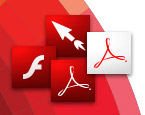10 Predictions for Rich Internet Applications in 2007

2007 is going to be a huge year for Rich Internet Applications. Rich media is going to be in high demand and companies are going to see the economic benefits of building richer experiences than traditional web experiences allow. The explosion of video and multimedia on the web will continue to push the limits of browser based applications until people realize linking the web and the desktop can give them more control over data and experiences. RSS and Microformats will help developers abstract the important data from the web and give them the freedom to build RIAs that are just as useful as web applications but more robust and more in tune with how people use their computers.
With that backdrop I've written 10 predictions for Rich Internet Applications in the year 2007. I'm already cringing about revisiting these next year, but if year end predictions aren't for looking back at how silly you were, then what are they for? With that in mind, I give you my 10 predictions for RIAs in 2007.
1. Vista is going to raise the bar for experiences across the board. When Vista goes out to regular consumers in January it's going to set a new level for what they expect their applications to be. The subtleties of the UI and overall focus on a better experience is going to affect how those consumers see the web. When you think about the kind of applications that will be built for Vista using Windows Presentation Foundation, an even higher level if rich interactivity and media integration is going to be expected by Joe user.

3. Microsoft is going to make inroads into the design market. Expression Studio and the way it works with Visual Studio is going to turn heads in the development shops that are looking to build Rich Internet Application solutions. Adobe will remain the dominant player in the space, but the Expression Studio tools will be taken up by more than just .NET developers who need to make pretty applications (see 1). We'll see this tool in design shops.
4. The Designer/Developer workflow will get some mainstream press. Along with number three, I think the designer/developer workflow is going to become much more important in the overall conversation. Guys like Dave Sheaand Shaun Inman are going to be talking about applying design techniques to these new Rich Internet Applications and developers are going to be looking for easy ways to integrate design into their workflows.
5.6. Competition for technology in the online video space will heat up. Flash has been the runaway winner in the online video space primarily because it's everywhere and it's easy to use. WPF/E is going to start giving Flash video a run for its money as a delivery mechanism for video on the web. By the end of the year Flash video will continue to be considered the standard, but WPF/E will have taken some marketshare and a lot of video sites will offer a Flash version and a WPF/E version of their videos.
9. The Mozilla platform and Apollo will fight for the cutting edge Ajax developers. As RIAs become more in demand, the people that have invested time and money in JavaScript will look at solutions that allow them to use the skills they have. The Mozilla platform has the tradition, the "street cred" and a powerful way to build Uis with XUL. Apollo will give Ajax developers a richer environment to develop in and the ability to incorporate Flash into their applications. Eventually Apollo is going to win out as the restrictions of the browser (even Mozilla's souped up version of it) prove to be too limiting and the draw of rich media makes Ajax/Flash an appealing option.
10.